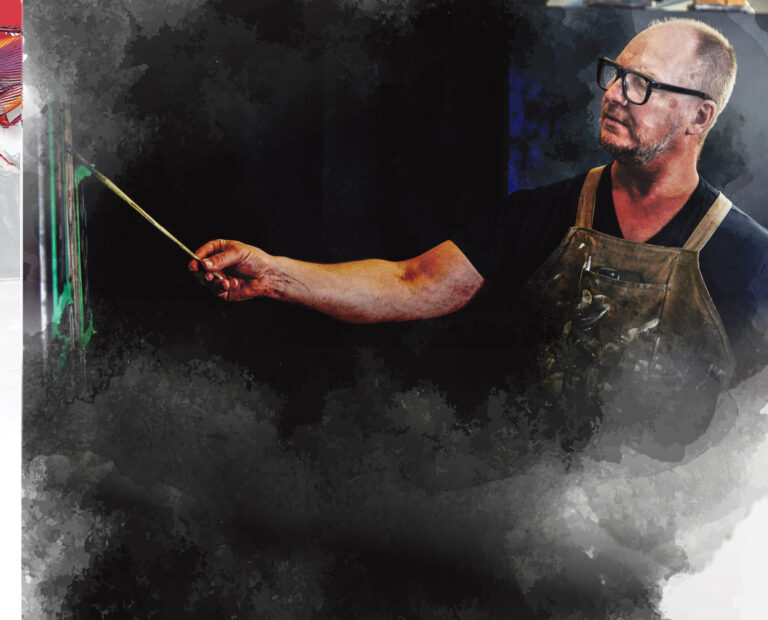by Vejay Steede
Henry Liam Ward is an internationally acclaimed portrait artist who calls Bermuda home. His portrait of Her Royal Majesty, Queen Elizabeth II – which was commissioned by the Red Cross in 2015 – was celebrated internationally and today hangs in Windsor Castle. Henry possesses an uncanny ability to capture the human form through light, and space, and his work is currently on show at the Bermuda National Gallery (BNG).
RG Mags: Tell us about your background.
Henry Ward: I grew up in an incredible house on the Essex/Suffolk border before moving to Bermuda in 1987, with my parents – Puisne Justice Martyn and Mrs Rosanna Ward. My parents led an incredibly affluent life, and were surrounded by all manner of artists and eccentrics – painters, opera singers, writers, members of the Judiciary, sheriffs, and crazy aristocrats – most of whom were internationally renowned and (in)famous!
This background instilled a sense of difference in me – indeed, to be different was obligatory. Success followed all of these people and was in tune with my parents, who were also highly successful, accomplished, and driven. All of these influences led to me developing my sense of being, through my work.
RG Mags: Why Art?
HW: I was drawing before I was walking or talking. It was a path that was chosen for me, and one which I have cultivated through many long years of dedication and application.
To me, the concept of recording the world became a fundamentally different process after my father’s death in 1991. In the depths of my loss, I realised that the making of art is far from an easy process. Art suddenly became a means by which I could look at the big questions of human existence and come to a sense of peace, or at the least, understanding.
Human experience is one that can be gilt-edged with beauty and vivacity, and yet the finality, actuality, and immediacy of death is ever present. It is to this that I refer in my paintings of people – glistening like brilliant jewels against the uncompromising darkness of the universe.
RG Mags: Discuss your favorite artists, and medium.
HW: Like so many figurative artists, I am drawn to the old masters – Leonardo, Michelangelo, Rembrandt, Velazquez, Vermeer. There is a truth in the process of creating that cheats time. As such, the processes of oil painting are the direct extension of this creative continuity. Oil paint is a medium that can be applied in layers and washes; over considerable periods of time. As the work ages, so does the subject sitting for me; and therein lies the synchronicity of human life and the making of paintings.
RG Mags: Tell us about your personal favorites of your own work.
HW: This is such a difficult question, as I am never satisfied with my work. Indeed, if the artist made the perfect work, they would never work again. I prefer, instead, to think of importance and relevance as key signifiers of my best work. With this in mind, ‘The Dance’ is up there with my most important works in its expression of my philosophy, and its use of young ballerinas to express the poetic fragility of life, whilst also celebrating human diversity in cooperation on the existential plane.
RG Mags: Where do you see your Art going next?
HW: The processes employed in my work have led me to explore the limits of representational painting. The ‘Ballerina’ painting at the BNG is one of the most important works in the exhibition, as it is the furthest I have pushed the limits of cogent naturalism.
The power of restraint, in withholding meaning, ironically, leads to universality in the presentation of a philosophy. As such, I see a move further into abstraction in the future – in the same way that Giacometti might build up a form, then whittle it down to its most concentrated essence.

